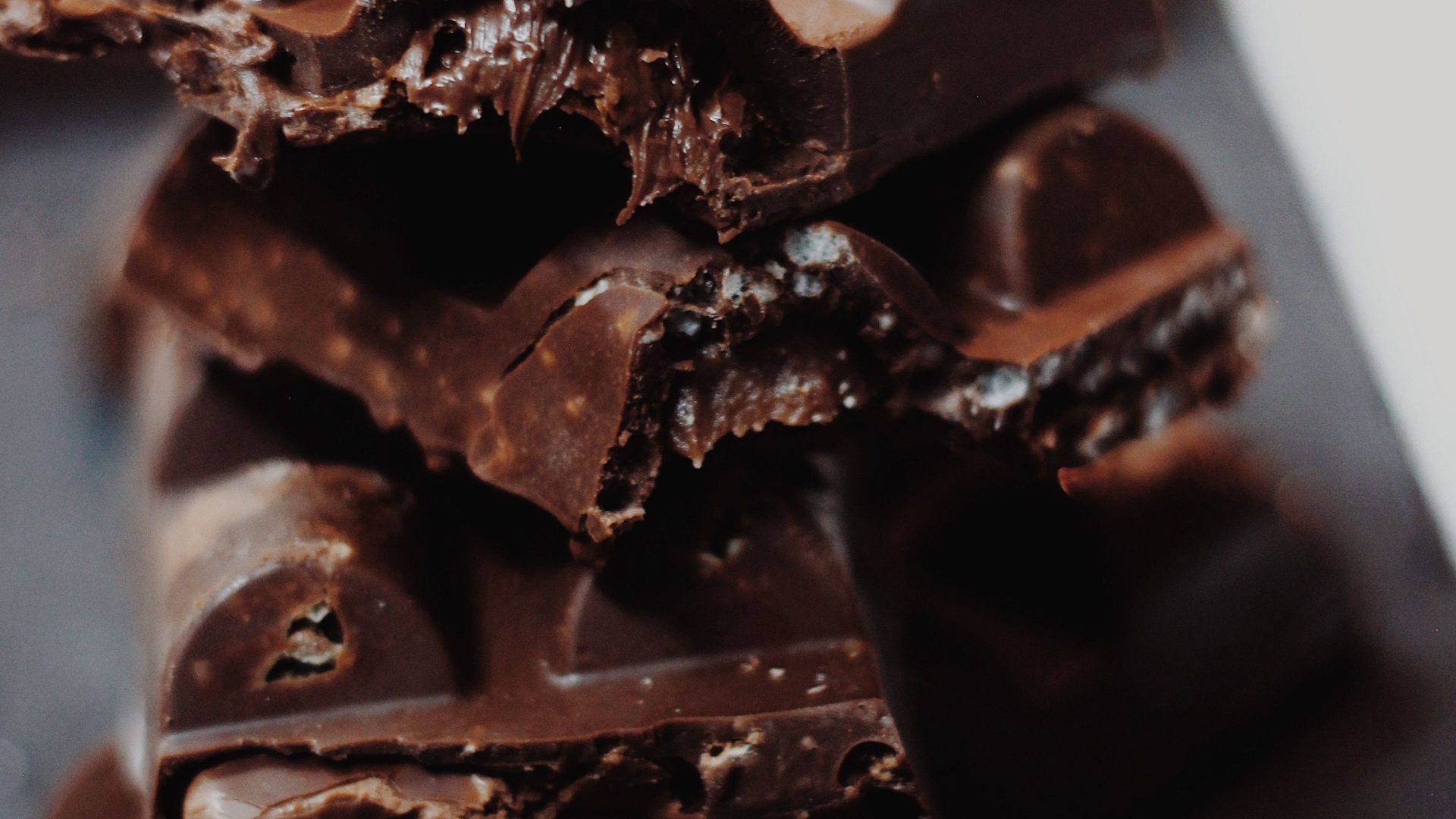What makes chocolate the king of sweets? Everything.
It has its origin in America and was brought to Europe by Christopher Columbus. The word ‘Chocolate’ comes from the Aztec word “xocolatl”, which means “bitter water” and the botanical name of the cacao plant is “Theobroma Cacao”, which means “Food of the gods”. If the ancient gods of Greco-Roman mythology had known chocolate, that would have been their “ambrosia” and even their “nectar”.
At the end of the 18th century, chocolate was used in confectionery, in creating cakes, chocolate bars, and other delicacies. From that moment on, each country created its typical desserts or sweets. Let’s take a world tour in search of chocolate…
United States: Brownie

A curious case is that of the Brownie in the United States. There are many legends surrounding the origin of this brownie pan.
One of them, and perhaps the most accepted, is that it happened in Chicago at the Palmer House Hotel, during an exhibition when it was ordered to prepare a dessert to be placed in boxes so that the ladies would not get their hands dirty when eating it.
Another popular myth speaks of a woman in Maine who was baking a cake and forgot to include the baking powder. It didn’t rise correctly, but she served the flat cake, anyway. And thus, the brownies were born. If this story is true, I’d like to thank that cook very much for forgetting the baking powder.
Austria: Sachertorte

Moving on to Europe, the Sacher Cake is the most famous dessert in Austria.
It’s made up of two rich layers of chocolate sponge cake that are filled with apricot jam, covered with dark chocolate.
France: Chocolate Mousse

Can’t stop mentioning the mousse, originally from France where it appeared for the first time in a recipe book by the French chef Menon.
In it, he described three types of mousse: chocolate, coffee, and saffron.
And guess which of the three flavors was the one that launched this dessert to stardom?
More from France: Fondant au Chocolat

Also from France is the Fondant (or Coulant) au Chocolat, also known as “molten chocolate cake”.
It is one of the most famous desserts in the world and the favorite for those who visit France.
Today, we can enjoy it throughout the world.
Germany: Schwarzwälder Kirschtorte

Germany has its famous Schwarzwälder Kirschtorte or the Black Forest cake.
It is made of several layers of chocolate sponge cake, soaked in cherry juice and interspersed with cream and cherries, and finally covered with whipped cream, chocolate shavings, and cherries.
Argentina: Chocolate Alfajor

Returning to the Americas; Argentina has a wide pastry culture, and one of its most recognized desserts is the Alfajor.
I personally recommend the Havana brand.
This version is made of dark chocolate with a dulce de leche center and a chocolate bath, and it is a delight that you must try before you die.
Brazil: Brigadeiros

In Brazil, the Chocolate Brigadeiros, also known as Negrinhos, is a traditional delicacy.
It is a sweet that looks like a chocolate truffle, although its caramel texture and flavor are more reminiscent of chocolates.
In fact, the key to this dessert is its texture, as it surprises people who taste it for the first time by melting in the mouth.
Australia: Lamington

In remote Australia (not so remote for Australians) they have the pleasure of having the Lamington.
It is a sponge cake filled with jam or cream that is covered with glazed chocolate and grated coconut. It’s delicious!
Japan: Chokorētomūsukēki (what?)

Japan does not escape the charm of chocolate. In recent years, and thanks to social networks, the Japanese chocolate mousse cake (Chokorētomūsukēki) has become very famous. It has a similarity to mousse, but with a thick consistency akin to soft chocolate gelatin.
Can White Chocolate Be Considered Chocolate?
Well, legally, yes. Technically, no. On this thorny issue, there is still no definition. Some say that white chocolate cannot technically be considered chocolate, because it uses a derivative and does not contain cocoa solids or paste. It is also much richer in sugars and fat, and less healthy than dark chocolate. White chocolate is a sweet made up of 14% milk solids, a minimum of 20% cocoa butter (a fat of vegetable origin), 3.5% milk fat, and a maximum of 55% sugar. SUGAR!
Cocoa solids content
| Dark chocolate | Milk chocolate | White chocolate |
| 70% – 99% | 20% – 40% | 0% |
The more cocoa solids chocolate has, the less sugar it has. The debate is open.
Some Myths About Chocolate
- Chocolate makes you fat. FAKE
- Chocolate causes acne. FAKE
- Chocolate causes cavities. FAKE
- Chocolate causes hyperactivity. FAKE
- Chocolate causes migraines. FAKE
- Chocolate is addictive. FAKE
- Chocolate is an aphrodisiac. FAKE
😁
Source Club del Chocolate
Some Truths About Chocolate
- Dark chocolate is better than milk chocolate, and they better than white chocolate. TRUE
- Chocolate is good for the heart. TRUE
- Chocolate improves mood. TRUE
- Activates the mind. TRUE
- Delays cellular aging. TRUE
- Improves concentration. TRUE
- Chocolate is poisonous to dogs, cats, and other domestic pets. TRUE
Sources: Puntobiz.com and Blogdeasisa.es
More Chocolate Facts
- The United States consumes 18% of the world’s chocolate but is only 4.25% of the world population.
- The company with the highest dollar sales of chocolate-related products is Mars Inc.
- The country’s highest annual per capita consumption of chocolate is Germany (11.1 kg), followed by Switzerland (9.7 kg), Estonia (8.8 kg), the UK (8.1 kg), and Finland (7.4 kg). Source: Syndicat du Chocolat
Finally, if you can’t eat all your chocolate, it will keep in the freezer. But hey, if you can’t eat all your chocolate, what’s wrong with you?
Guten Appetit!
by: Román Vergara


